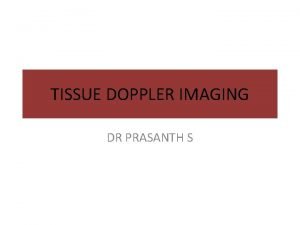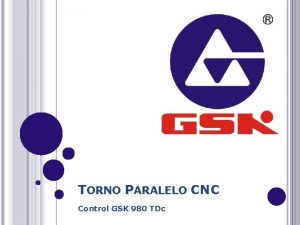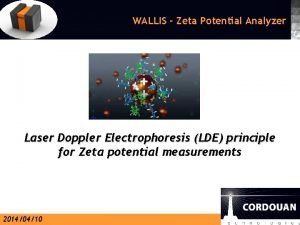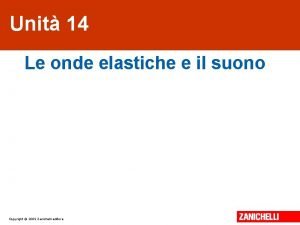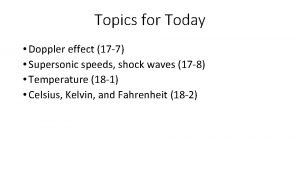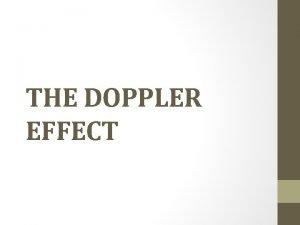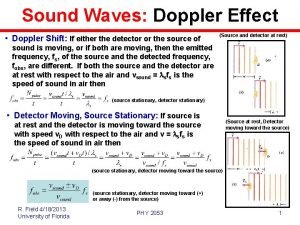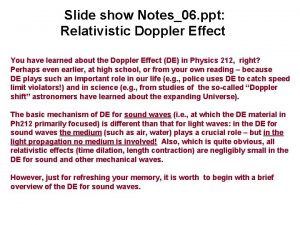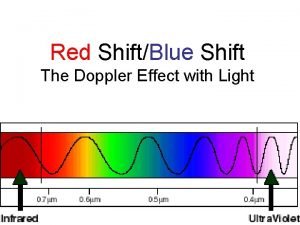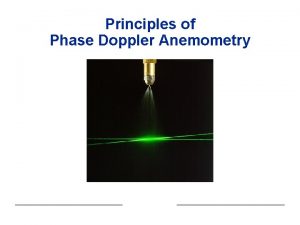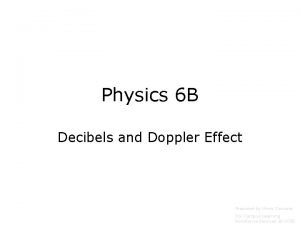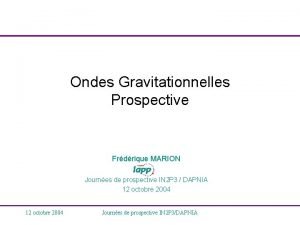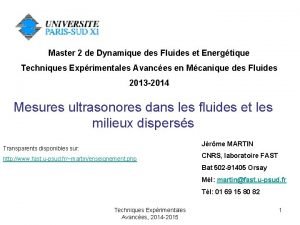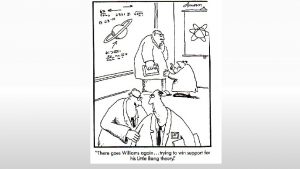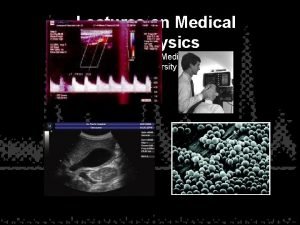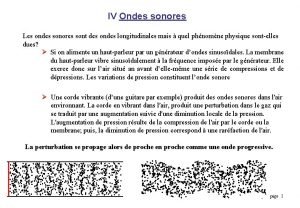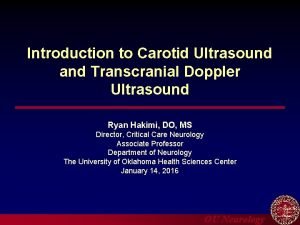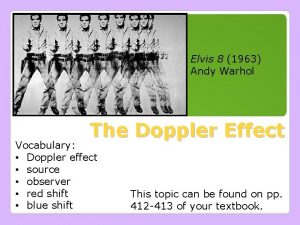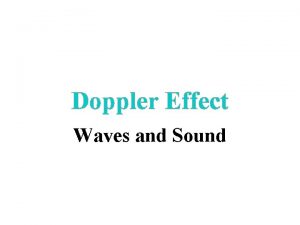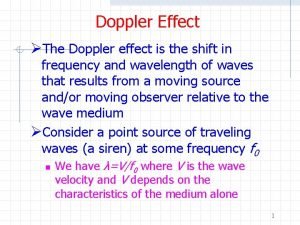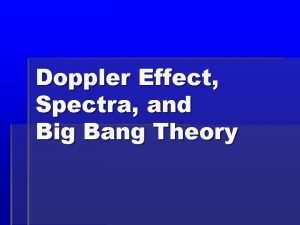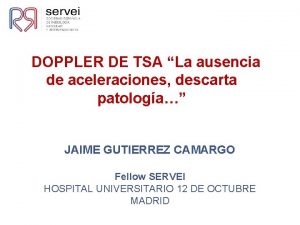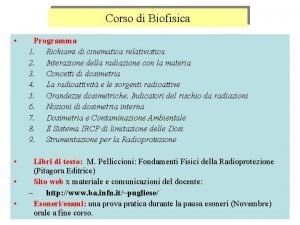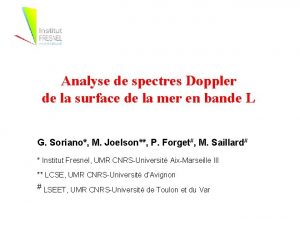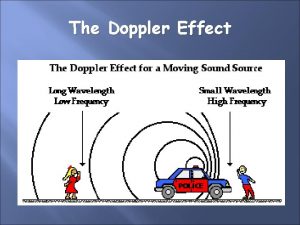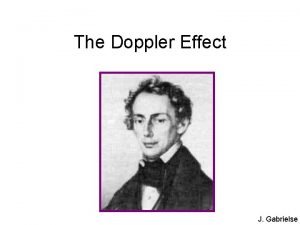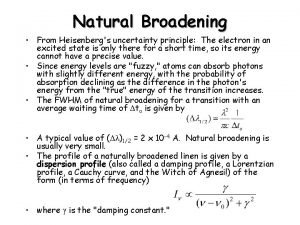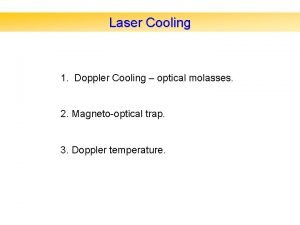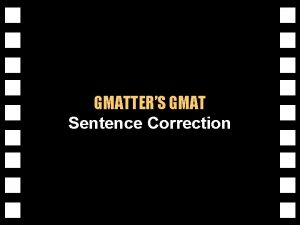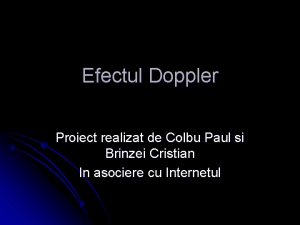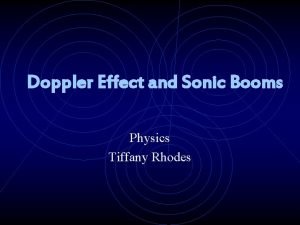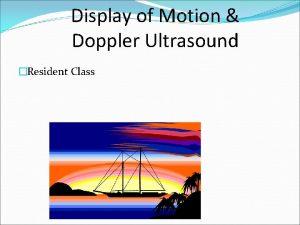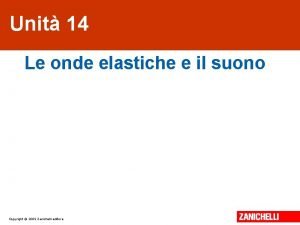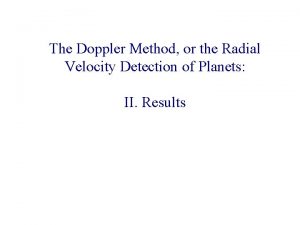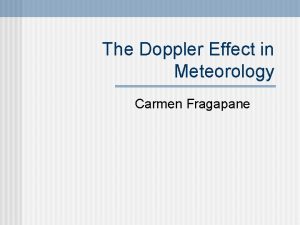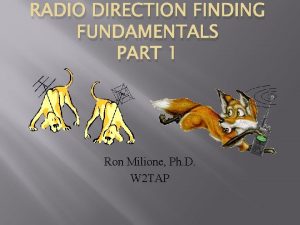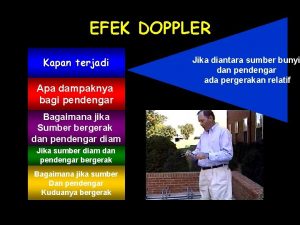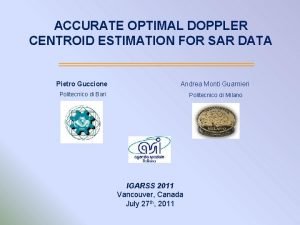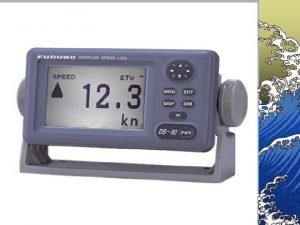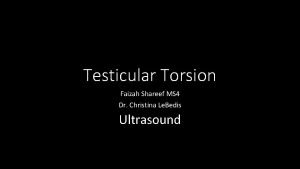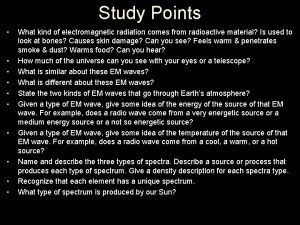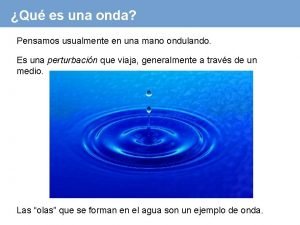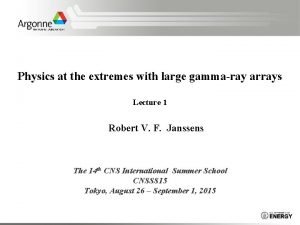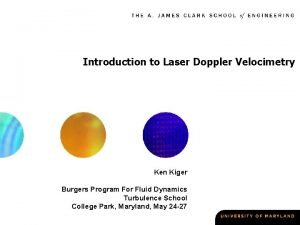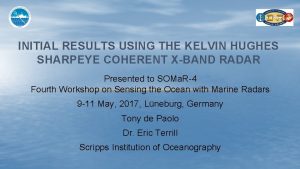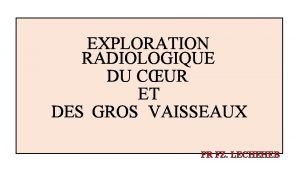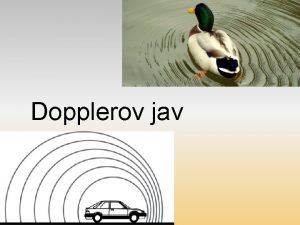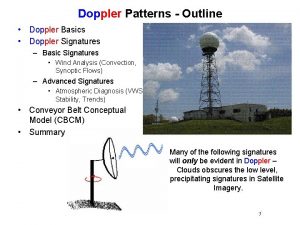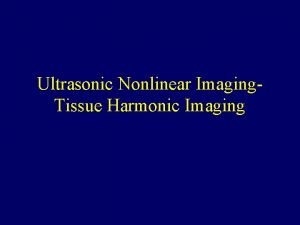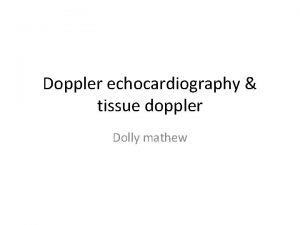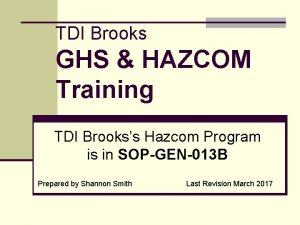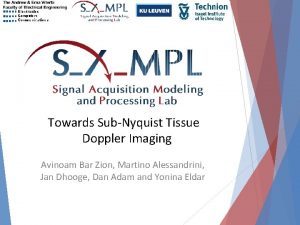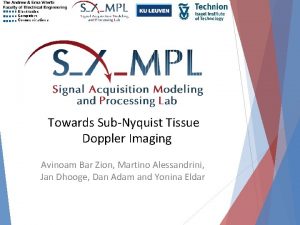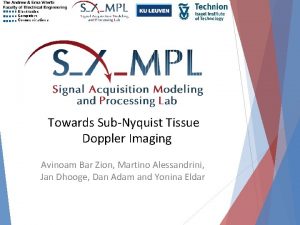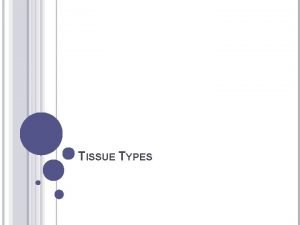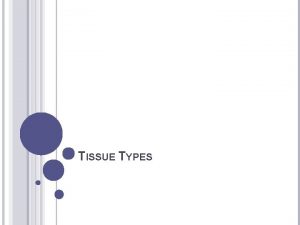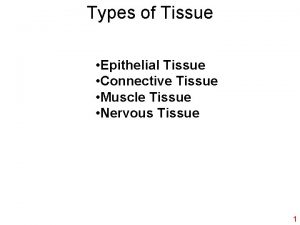TISSUE DOPPLER IMAGING DR PRASANTH S Introduction TDI































































- Slides: 63

TISSUE DOPPLER IMAGING DR PRASANTH S

Introduction • TDI uses Doppler shift data from the myocardium to obtain qualitative and quantitative information on myocardial wall motion. • Measures the velocity of myocardial wall motion v. Low velocity • 5 to 20 cm/s • 10 times slower than velocity of blood flow v. High amplitude • Approximately 40 decibels higher than blood flow Int. J of Card Imaging 2001; 17: : 8

Doppler tissue Vs blood pool imaging


Tissue Doppler –imaging modes – Pulse wave Doppler – Color 2 D imaging – Color M- Mode

2 D Colour TDI • Colour-coded representation of myocardial velocities- superimposed on gray-scale 2 dimensional images. • indicate the direction and velocity of myocardial motion. • increased spatial resolution and the ability to evaluate multiple structures and segments in a single view.


M-mode colour Doppler tissue imaging • Colour-encoded images of tissue motion along an M-mode interrogation line. • High temporal and spatial resolution.

Pulsed-wave TDI • Used to measure peak myocardial velocities • Mitral annular motion: Good surrogate measure of overall longitudinal left ventricular contraction and relaxation. • To measure longitudinal myocardial velocities, the sample volume is placed in the ventricular myocardium immediately adjacent to the mitral annulus

Pulse Wave Tissue Doppler


Diastolic components of myocardial velocities correlate with mitral inflow velocities

Normal Myocardial Velocities : Basal Segments (cm/s) J Am Soc Echo 2001; 14: 1143 -52

Myocardial Velocity Gradient • Difference in myocardial velocity between the endocardium and epicardium divided by the myocardial wall thickness • Reflects rate of change in wall thickness • MVG is an indicator of regional myocardial contraction. • Determined in a single segment with the same angle of interrogation of the Doppler beamrelatively angle independent J Am Coll. Card 1995; 26: 217 -23


CLINICAL APPLICATIONS OF TDI

Assessment of LV Systolic Function • Sa- Correlated with LV ejection fraction. • Peak systolic velocities were measured at 4 different sites of the mitral annulus. • A cut-off point of ≥ 7. 5 cm/s had a sensitivity of 79 % and a specificity of 88 % in predicting preserved systolic function or ejection fraction of ≥ 0. 50. • Regional reductions in Sa - regional wall motion abnormalities. J Clin Basic Cardiol 2002; 5: 127

Regional Systolic Function • Pulse wave tissue Doppler after anteroseptal MI. • Decreased velocity in the septum (top). • Normal velocity in the lateral wall (bottom).

Diastolic Dysfunction Impaired relaxation Pseudonormal Restrictive

• Transmitral flow velocities are dependent on LA filling pressures. • Psuedonormalization occurs as LA pressure increases. • Difficult to diagnose diastolic dysfunction from mitral flow velocities. • Myocardial velocities are persistently reduced in all stages of diastolic dysfunction. • TDI assessment of diastolic function is less preload dependent.

Diastolic Dysfunction NORMAL Impaired Relaxation Pseudonormal Restrictive Filling DT <220 ms >220 ms 150 -200 ms <150 E/A 1 -2 <1 1 -2 >2 Em >8 <8 <8 <8

Diastolic Dysfunction

Estimation of LV Filling Pressures • LV filling pressures are correlated with the ratio of the mitral inflow E wave to the tissue Doppler Ea wave (E/E’) • E/lateral E’ ≥ 20 - elevated LV end-diastolic pressure. • E/E’ = 5 -15 is correlated with a normal LV EDP • E/E’ > 20 predicted PCWP > 15 mm of Hg with 92% sensitivity and 82% specificity Nagueh et al

Constrictive Vs Restrictive Physiology • Constrictive pericarditis with normal LV function have normal or elevated Em velocities. • Doppler Em velocity of 8 cm/s differentiates constriction and restriction. • Restrictive < 8 cm/s • Constrictive > 8 cm/s


Assessment of Right Ventricular Function • Important prognostic indicator in patients with heart failure and in postinfarction patients • Reduced tricuspid annular velocities with TDI have been documented in Post inferior myocardial infarction, chronic pulmonary hypertension, and chronic heart failure.

Limitations • Accuracy of velocities dependent on angle of ultrasound beam. • Not all wall velocity obtainable from every view. • Wide range of normal values. • Even non contractile myocardium will be pulled by near by segments resulting in apparent velocity component.

Strain Rate Imaging

Introduction • Evaluation of a myocardial region with reference to an adjacent myocardial segment. • Deformation analysis- analysis of ventricular mechanics or shapes during cardiac cycle. • Myocardial strain, strain rate, torsion. • Strain- percentage thickening or deformation of the myocardium during the cardiac cycle. • Change of strain per unit of time is referred to as strain rate

• Strain calculated in three orthogonal planesrepresenting longitudinal, radial, circumferential contraction. • Negative strain- shortening of segment. • Positive strain- lengthening of segment


Strain & Strain rate


Methods Doppler tissue imaging • Two discrete points are compared for change in velocity • Strain rate- primary parameter obtained • Strain –derived by integrating velocity over time. Speckle tracking • Actual location of discrete myocardial segments calculated. • Strain is the primary parameter. • Strain rate-derived by calculating change in distance over time.

Comparison of Two-Dimensional Speckle Tracking Echocardiography (2 D STE) with Tissue Doppler Imaging (TDI) 2 D STE TDI Deformation analysis in 2 dimensions. One-Dimension measurements Angle independent Measurement dependent on angle Better spatial resolution Limited spatial resolution Less time-consuming data acquisition and easy data processing. Time-consuming Lower temporal resolution High temporal resolution Dependent on high resolution image quality Image quality less important Lower interobserver variability Higher interobserver variability Lower optimal frame rate limits the reliability of measurements in patients with tachycardia


SR- Doppler tissue imaging

Speckle tracking • ‘Speckles’ are small dots or groups of myocardial pixels that are created by the interaction of ultrasonic beams and the myocardium. • Considered as acoustic fingerprint for that region. • This enables to judge the direction of movement, the speed of such movement, and the distance of such movement of any points in the myocardium.

Speckle

Method • Track the endocardial and epicardial borders of the left ventricle • Correctly define the region of interest (ROI) in the long or short axis view • Post-processing software automatically divides the ventricle into six equally distributed segments • 2 D or 3 D data set is produced • Mathematical algorithms are applied to generate values

• Strain is not uniform among all myocardial segments. • Radial strain-Magnitude of basal parameters are higher than the apical values. • Longitudinal strain- less variability fron apex to base. • Circumferential strain- higher in anterior and lateral walls compared to posterior and septal. • Normal longitudinal strain averages -20% • Normal radial strain about +40%


Normal Strain Displays Wave Forms , Curved M-mode

Normal Strain Displays- bulls eye presentation


Normal pattern Dilated cardiomyopathy Dyssynchrony

Velocity vector imaging

Cardiac muscle • 3 layers 1) middle transverse layer. 2) inner oblique layer(descending segment) 3) outer oblique layer( ascending segment)

VENTRICULAR TORSION • Similar to the winding and Unwinding of a towel. • Isovolumetric contraction -the apex and base rotates in counterclockwise direction. • Ejection phase apex rotates counterclockwise & base rotates clockwise when viewed from the apex • Diastole - relaxation of myocardial fibres - recoiling clockwise apical rotation. • Isovolumetric relaxation- both apex and base rotates in clockwise direction.

Myocardial mechanics

• Rotation - Measure of the rotational movement of the myocardium in relation to an imaginary long axis line from apex to base drawn through the middle of LV cavity. • Twist (degrees) is the net difference between apical and basal rotation • Torsion - Twist divided by the vertical distance between the apex and base and is expressed as degrees/cm.

VENTRICULAR TORSION

CAD- Myocardial ischemia, Myocardial infarction, Myocardial viability • Reduction in strain by 2 D STE more objective and accurate than the traditional visual method of assessing WMA. • Post systolic thickening (deformation)by radial strain correlates with the severity of ischemia. • To differentiate transmural from subendocardial infarction- lower circumferential strain in the former

Applications • Heart failure with normal LVEF Reduced and delayed LV untwisting—at rest and exercise • Cardiac resynchronization therapy (CRT) Speckle Tracking and Resynchronization (STAR) study showed radial and transversal strain better than longitudinal and circumferential strain in predicting LVEF response and long term survival after CRT. Lack of dyssynchrony before CRT by 2 D STE radial strain associated with death or hospitalization for heart failure

Twist in DCM Am J Cardiol 2008; 101: 1163– 1169, 2008

Applications • Stress cardiomyopathy. • Restrictive cardiomyopathy. • Detection of subclinical diseases/early myocardial involvement. • Detection of rejection and coronary stenosis in heart transplant patients. • Early detection of chemotherapy induced cardiotoxicity. • Valvular heart disease. Decreased radial, circumferential and longitudinal strain in patients with severe aortic stenosis and normal LVEF. Long term follow up after valve replacement showed significant improvement in strain.

Differentiation of Athlete’s Heart from Hypertrophic Cardiomyopathy Athlete’s Heart Hypertrophic Cardiomyopathy Normal longitudinal and other types of strain Decreased longitudinal strain Increased LVEDV Decreases after deconditioning for 3 months. Decreased LVEDV No change with deconditioning. Increased LV twist. Delayed LV untwisting. Increased early LA strain rate. Reduced LA strain and strain rate






 Tissue doppler imaging
Tissue doppler imaging Frc driver station mac
Frc driver station mac Manual gsk 980 español
Manual gsk 980 español Ri dlt tdi
Ri dlt tdi Mdi tdi
Mdi tdi Nutanix sap hana production
Nutanix sap hana production Brown mdi
Brown mdi Hana paint
Hana paint Cassie brown tdi
Cassie brown tdi Ptmg/tdi type
Ptmg/tdi type Jaringan epitel dapat ditemukan di
Jaringan epitel dapat ditemukan di Laser doppler electrophoresis
Laser doppler electrophoresis Onde longitudinali
Onde longitudinali Mach cone
Mach cone Doppler effect when to add or subtract
Doppler effect when to add or subtract Doppler effect
Doppler effect Doppler effect animation ppt
Doppler effect animation ppt So far away
So far away Phase doppler anemometry
Phase doppler anemometry Doppler effect formula
Doppler effect formula Effet doppler
Effet doppler Limitations of mti performance
Limitations of mti performance Pulse doppler radar vs mti
Pulse doppler radar vs mti Effet doppler
Effet doppler Doppler effect
Doppler effect Duplex doppler ultrasound
Duplex doppler ultrasound Effet doppler
Effet doppler Carotid doppler velocity chart
Carotid doppler velocity chart Um professor lê o seu jornal sentado no banco
Um professor lê o seu jornal sentado no banco Doppler effect
Doppler effect Um professor lê o seu jornal sentado no banco
Um professor lê o seu jornal sentado no banco Doppler effect formula
Doppler effect formula Doppler effect in light
Doppler effect in light Big bang theory doppler effect
Big bang theory doppler effect Doppler tsa
Doppler tsa Effetto doppler formule inverse
Effetto doppler formule inverse Analyse af doppler
Analyse af doppler Doppler effect
Doppler effect Whats happening in this picture
Whats happening in this picture Doppler effect bbc bitesize
Doppler effect bbc bitesize Natural broadening
Natural broadening Optical molasses
Optical molasses It's warm in spring
It's warm in spring Since 1981 when the farm depression began
Since 1981 when the farm depression began Angolo di insonazione
Angolo di insonazione Ce este efectul doppler
Ce este efectul doppler Doppler effect
Doppler effect Doppler effect youtube
Doppler effect youtube Continuous wave doppler
Continuous wave doppler Effetto doppler - zanichelli
Effetto doppler - zanichelli Doppler method
Doppler method Doppler effect in meteorology
Doppler effect in meteorology Df2020t
Df2020t Efek doppler
Efek doppler Doppler centroid
Doppler centroid Doppler log
Doppler log Christina shareef
Christina shareef Doppler gamma
Doppler gamma Efecto doppler longitud de onda
Efecto doppler longitud de onda Doppler gamma
Doppler gamma Off center
Off center Kelvin hughes sharpeye
Kelvin hughes sharpeye Echo doppler cardiaque
Echo doppler cardiaque Doplerov jav
Doplerov jav
